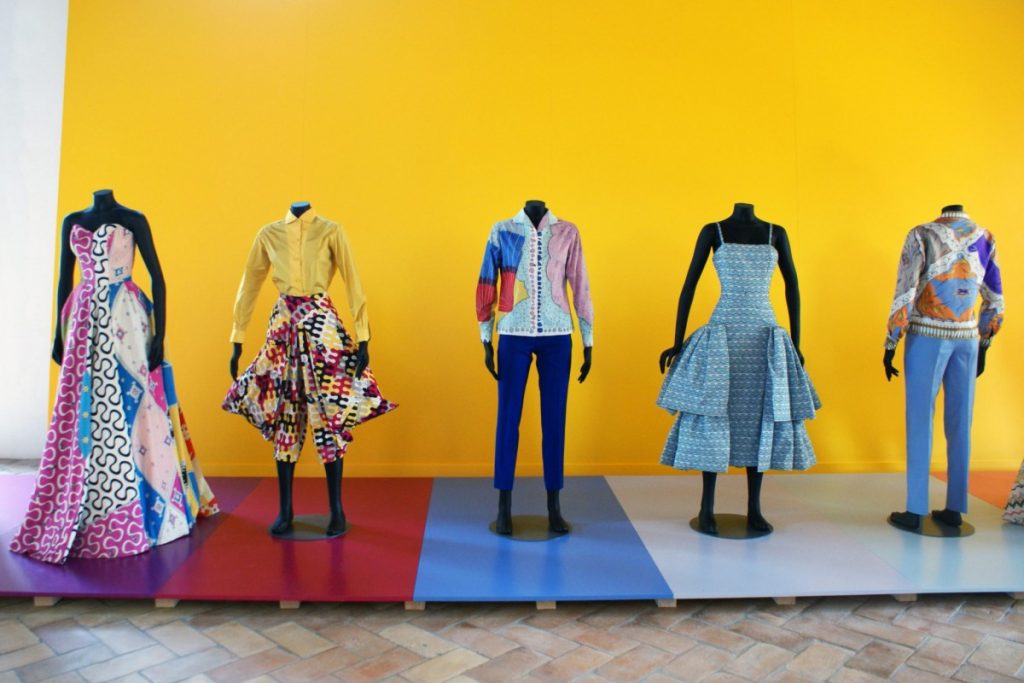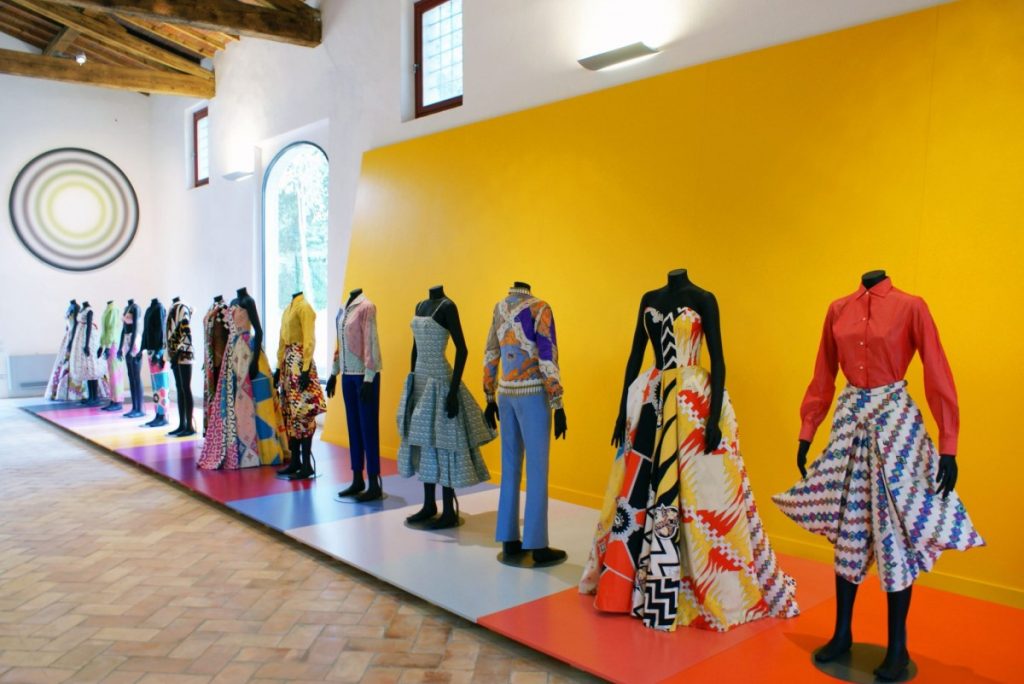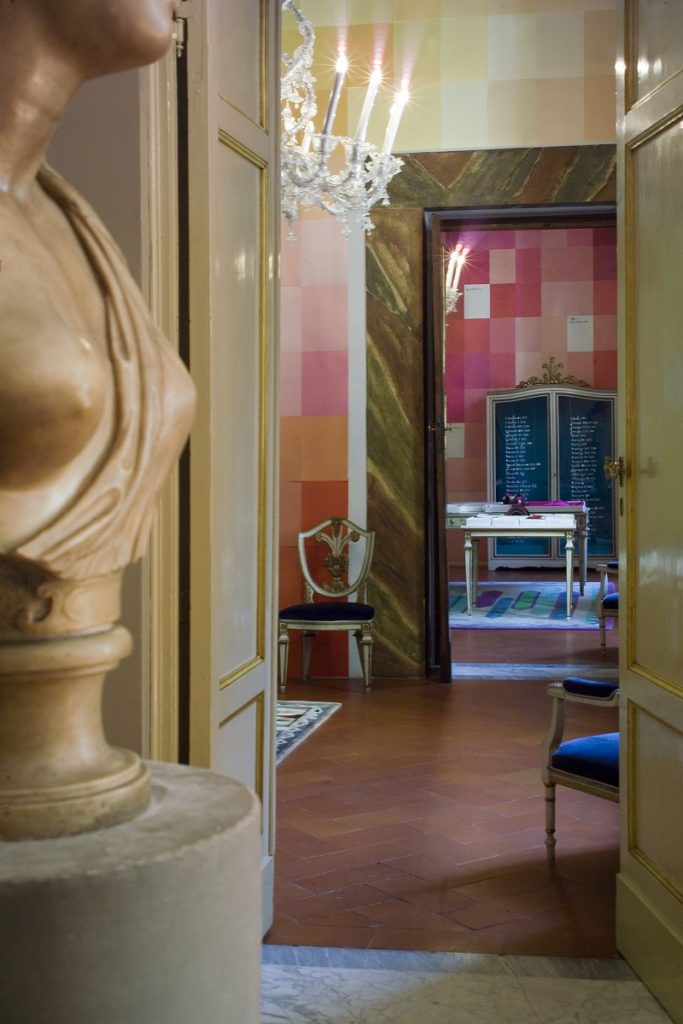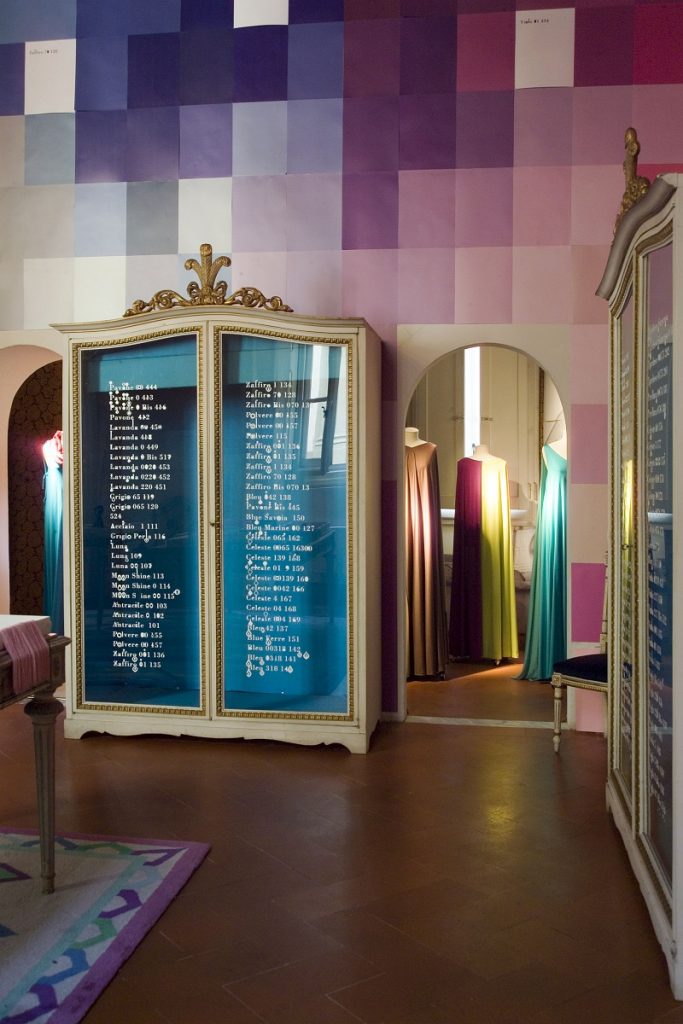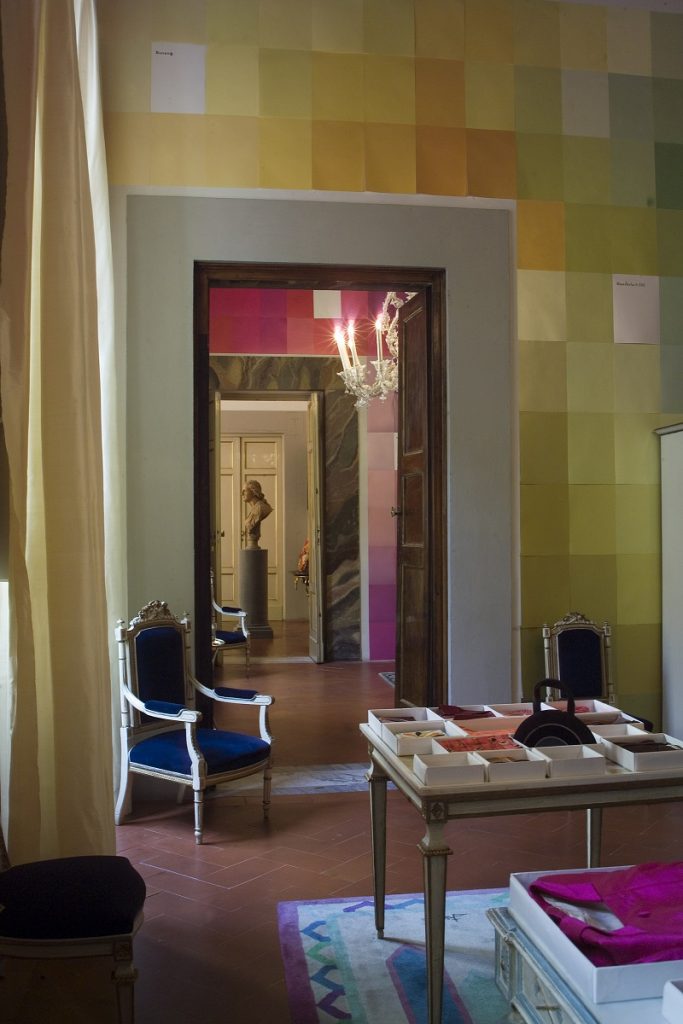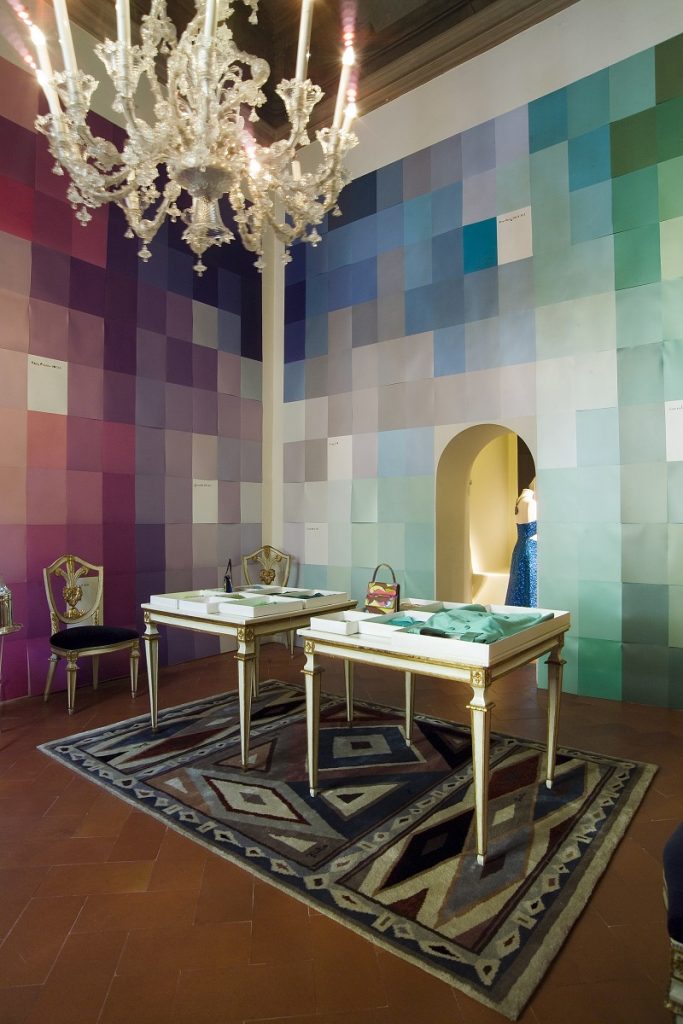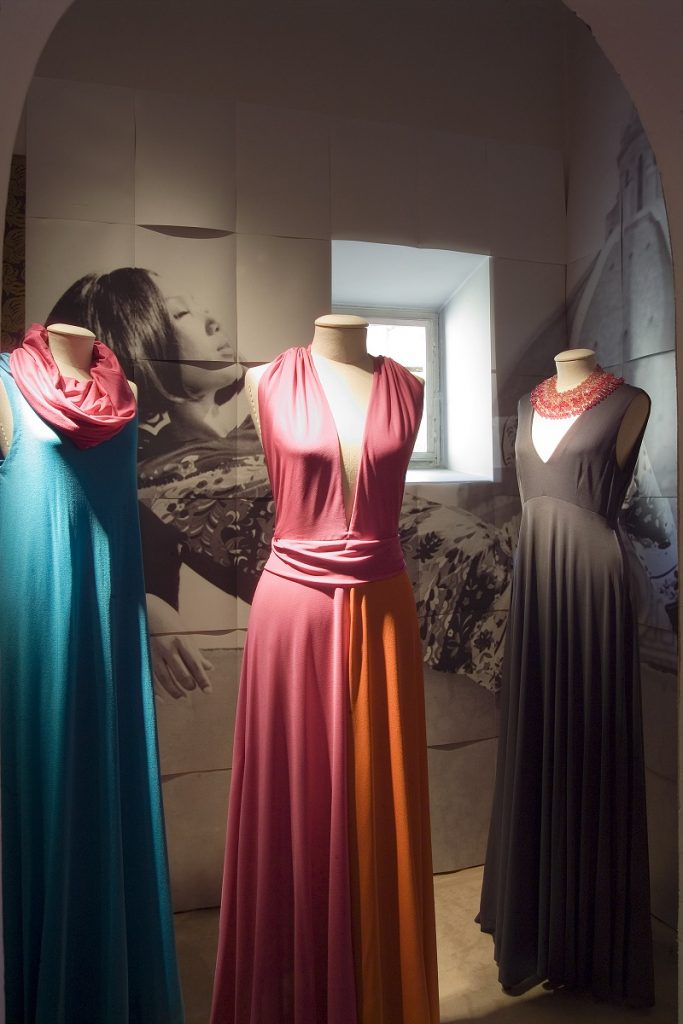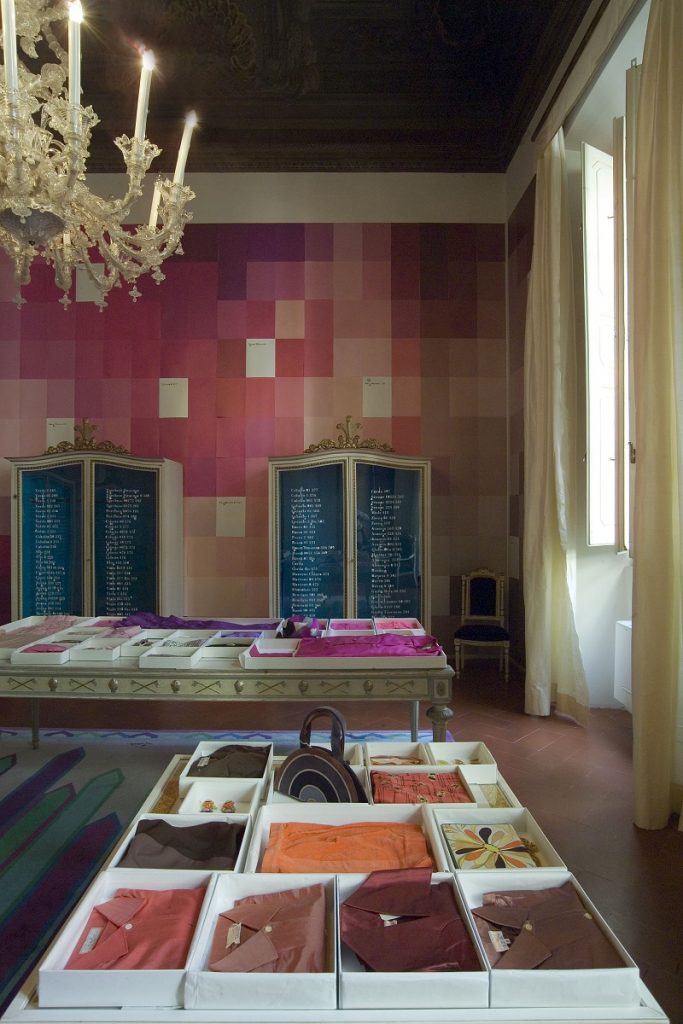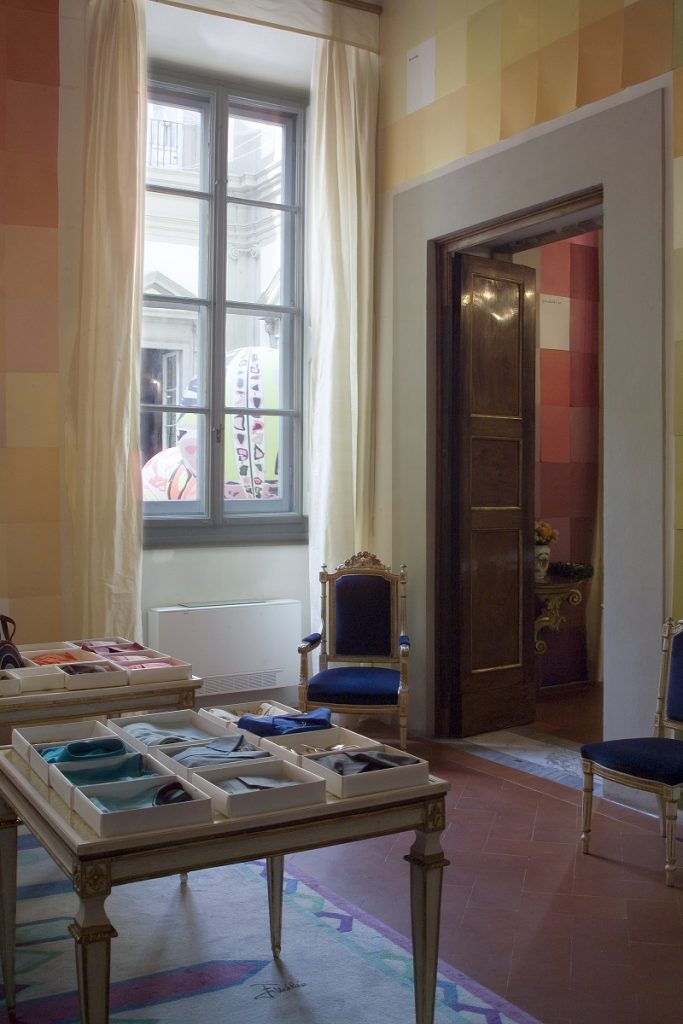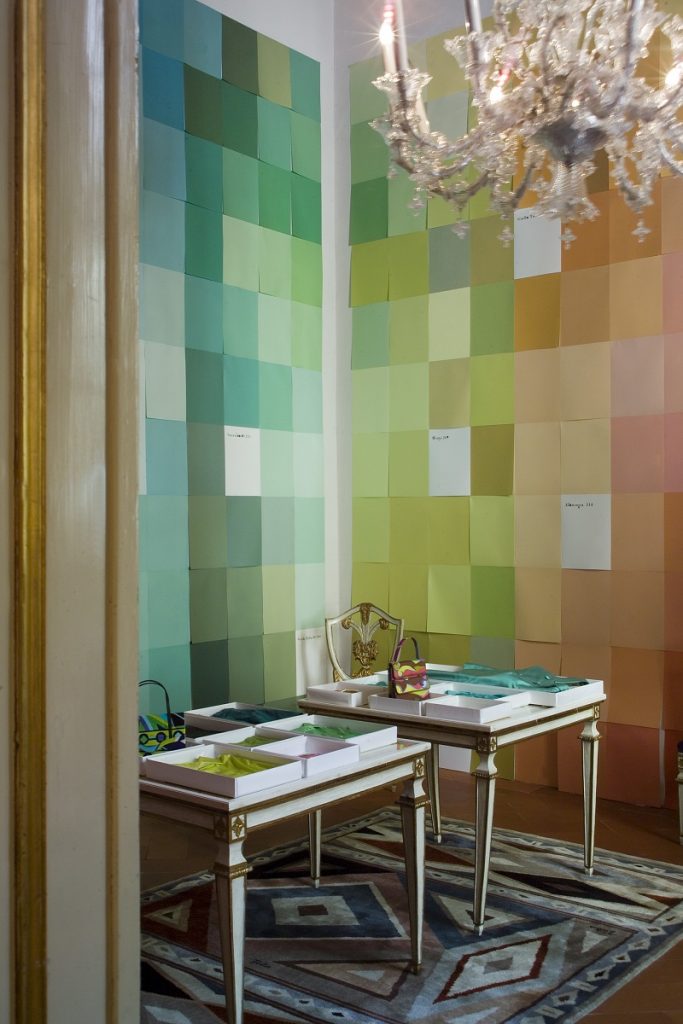Pucci: The Coloured Rooms
ITALY’S VERY FIRST READY TO WEAR LABEL CELEBRATES ITS 60TH BIRTHDAY
2007 is a landmark year for Emilio Pucci as the storied Florentine fashion brand celebrates its 60th anniversary. What started as a spontaneous fashion-fix on the slopes of Zermatt — Emilio Pucci effortlessly designing a chic ski outfit for a female friend – later exploded into a global fashion phenomenon that continues to resonate to this day. The oldest Italian ready-to-wear company in existence, the trajectory of this brand is astounding and started with the unique vision of one noble man 60 years ago. It follows his rise to fame in the 50s, the blitz of his celebrity-dom in the 1960s and 70s, and the resurgence of the brand in the 1990s. Today, the brand is once again booming as women around the world are drawn to the timeless appeal of Pucci style.
Born in 1914 to one of Florence’s oldest families, Emilio Pucci, the Marquis of Barsento, was an unlikely candidate to revolutionize the face of fashion. Yet despite his privileged birthright, or perhaps even because of it, he sensed a change in the air and instinctively knew what chic, modern women wanted to wear. Whether on the Swiss ski slopes or sunny beaches of Capri, the dashing Marquis embodied the playboy glamorous lifestyle of the women he would later dress.
When Pucci began his sartorial adventure, female fashion was dominated by Parisian haute couture. The designs of the day were stiff and constrictive, and women were weighed down by heavy layers of fabric. Pucci had a different vision. The precursor to modern day “sportswear”, his designs were weightless and minimal, they hugged the body rather than hiding it, they were stretchy to allow for movement, and they were look-at-me colorful. And they caused an absolute sensation.
It all started on a sunny day in 1947 on the slopes in Switzerland when Emilio put a girlfriend in a pair of slim, sleek ski pants and hooded parka of his own design. The outfit was photographed for Harper’s Bazaar, and suddenly the orders began pouring in from America for more designs. Emilio went to work, and quickly developed an arsenal of chic, signature pieces intended for sea side resort wear, which was a market that was grossly underdeveloped at the time. By 1950, he had set up his station on Capri, the Italian playground for the rich jet set. At his store, La Canzone del Mare, flocks of famous women – from Sofia Lauren to Gloria Guinness – came to stock up on his ankle skimming narrow ‘Capri’ pants in bright colors, cotton poplin shirts, silk scarves and jersey T-shirts. These iconic, body conscious pieces became the casual uniform of choice for modern women in the 1950s.
By the 1960s, Pucci was pioneering new fabrics and pushing his design principles even further, which put him at the forefront of cutting edge fashion. His innovative fabrics, including silk jerseys, cotton jerseys, velvets, flannels, synthetics and high tech stretch, were the result of extensive research with Italian textile companies and were way ahead of their time. The fabrics followed the body’s movements like a second skin, were wrinkle proof, and retained their shape. One of his most famous designs was an unlined, brightly printed silk jersey dress that weighed just six ounces and could be folded up to the size of a handkerchief. It was the ultimate symbol in jet set glamour and convenience.
Pucci was always captivated by prints and bold color. By 1962, he had fully embraced the stylized, graphic prints that made him so famous. The American press had crowned the Italian designer ‘the Prince of Prints’, and it’s no wonder. No one had ever seen designs like this: they were extraordinarily bold and swirled with color and graphic patterns. Many were inspired by Pucci’s trips to exotic places like Africa, Bali, or Hawaii. They were off set by a kaleidoscope of bright colors, from fuschia, to acqua, to lemon, lilac and almond green. Each print carried the designer’s name, in tiny handwritten form, marking the debut of a designer’s name as an external logo.
Throughout the 60s, the brand reached its pinnacle of success. The most beautiful, glamorous women in the world were all wearing Pucci designs and this influence trickled down to the masses. Part of Emilio’s success was due to his grasp of the social Zeitgeist of the moment. Whereas famed Parisian couturiers constricted women, Pucci’s designs liberated them. They were unlined, allowed for movement, and were considerably low-maintenance. His clothes embodied the onthe-go, active lifestyle that more and more women were embracing. They effortlessly took women from lunch, to cocktails to dinner, but never sacrificed style or beauty.
America’s best dressed, most glamorous women, from Jackie Kennedy, to Marilyn Monroe, to Lauren Bacall, all wore Pucci as a symbol of distinctive good taste. The brand enjoyed tremendous success in America, and was championed at stores like Neiman Marcus and Saks Fifth Avenue who had supported Pucci in his first fashion shows in Florence in the 1950s.
Uniquely, Pucci was intrigued by all aspects of design and lent his keen eye to disciplines outside of traditional ready-to-wear. As a result, he built a world of Emilio Pucci decades before the notion of a ‘lifestyle fashion brand’ became trendy in the 1990s. By the early 70s, the Pucci name was on household linens, underwear, rugs, handbags and perfume. Pucci even created stylish, mod uniforms for Braniff airlines, which further raised his profile outside the confines of niche fashion circles, and out into the greater public.
By the late 70s and early 80s, the rise of jeans and hippie-wear were a stark contrast to the designer’s vision of polished chic. Undeterred, the prolific designer continued to create quality, stylish designs until the end of his life, and many of his products still had the ability to sizzle. In 1987, presciently drawn back to the curves of the body, Pucci designed a stretchy full-body printed unitard that sent the fashion world atwitter. With his daughter Laudomia by his side, he continued designing until his death in 1992, and was one of the few designers to ever see his fashions come into style twice in one lifetime. As Laudomia continued to update select products for a new generation and garner a discreet following, fashion insiders were simultaneously unearthing vintage clothing and pouncing on past Pucci designs. An underground Pucci renaissance turned into a full bloom revival by the late 90s, as contemporary fashion designers began referencing Pucci in their ready-to-wear collections and women became increasingly wont to swap their all black wardrobes for a riot of color.
In 2000 luxury good group LVMH bought a 67% stake in the company, determined to fully resurrect the brand to its former glory. As the collections grew, and new stores sprouted up in nearly every major city in the world, Pucci became more than just a revival. The profile and image of this remarkable brand are now once again at the forefront of high end fashion. High profile designers like Christian Lacroix, who designed the brand’s collections for three years, or more recently Matthew Williamson, appointed Creative Director in October 2005, have given and continue to give fresh interpretations of Emilio Pucci’s unique style, constantly generating a creative buzz for the Maison. Modern women and designers alike have all come to rely on the foundations Emilio first forged, whether it be the dominance of comfortable chic dressing, the use of stretch fabrics or bright colors and eye popping prints. As the very first true fashion label formed in Italy, Emilio Pucci remains a key player in today’s modern fashion.
«PUCCI EVENTS» poetic installation. MAI 2007
“Y’a de la vie chez Pucci” – I have only to remember my first meeting with Laudomia Pucci, watching her make her way across the Sala Bianca in the Palazzo Pucci, her dress floating in graceful, joyful motion, the sunlight rippling over the colourful fabric. It was a magical moment.
This memorable image stayed with me as I considered how to capture the graceful movement of a Pucci creation without recourse to sophisticated production technology which would be contrary to the playful simplicity of this first vision.
So how could I display the great variety of Emilio Pucci’s design and simultaneously convey the delighted amazement of discovering his superb collections for the first time? Encountering the harmony of his rich colour palette, both simple and joyful, one is like a child discovering fireworks.
Movement is inherent to Pucci’s work, from the design of the fabric to the elaboration of a collection. Every detail is carefully thought through in terms of fluidity and motion, to such an extent that each piece comes fully alive only in movement. Balance, lightness, poetry, magic, grace and simplicity. Hence floating the dresses in a magical ballet, where subtlety and delicate balance are the key to the show. In this way, Pucci’s creations alone are the centrepiece of the installation, there is no artifice. This seemed to me the most respectful way to pay homage to the great designer.
The balloons weave magic, floating between sky and earth, playful witness to the timeless modernity of the designer. “Y’a de la joie chez Pucci” …the balloons carry us back to the joy of childhood.
G.Cholot, Scénographe Paris Mai 2007
Lighting Designer: Thierry Dreyfuss
Dress Structure: Marie Christophe
THE COLOURED ROOMS
“My first collection was entirely in black, and all the famous beaches were dressed in black. I found only black and white to be harmonious. Then I went on a quest. From the bougainvilleas in Capri came a purplish pink colour: Emilio rose. But I was unable to find a fabulous turquoise like that used in handpainted Mexican fabrics; I took five hundred photographs under water, near the Marina Piccola in Capri, where the rocks submerged for thirty metres, changing colour: white, pale green, pale blue, pale turquoise, sea green, sapphire, the colour of Capri’s Blue Grotto. And thus my water colours were born”.
(Emilio Pucci)
On the occasion of the sixtieth anniversary, an installation will be displayed at the original Florentine boutique opened in the 50’s by Emilio Pucci, at Palazzo Pucci. Here a tribute will be paid to Pucci’s extraordinary ability, today more than ever, to give a name and a shape to all the colours of the world.
Inside the cosy rooms already displaying that unmistakable style – simple and chic, always hovering between reinterpretation and innovation, continuously put to the test by the most incredible colour combinations – visitors can behold the kaleidoscopic world of Pucci, immersing themselves right into it.
The phantasmagoria of colours arranged at the set design exhibition will also include some pieces that are the extraordinary result of all those colours and that incredible mix of lightness, form, practicality and glamour.
Curated by Maria Luisa Frisa
with the collaboration of Alessandro Gori and Arabeschi di Latte
PALAZZO PUCCI LIGHT INSTALLATION
The designs and colours of Emilio Pucci continue to inspire creative projects and new artistic expressions.
Under the scope of events celebrating the 60th anniversary of the fashion house and in honour of the festival Genio Fiorentino, from May 11th to May 18th, Palazzo Pucci is hosting a light set created by Felice Limosani.
This is a site-specific installation that works on the sensorial nature and on the digital technologies capable of mixing the base colours of light and reproducing electronically the bright colouring of the Maison.
The result is the creation of actual ‘chromatic sensations’ visible from the outside that echo the magical and enchanted atmosphere on the frescos of the Palazzo.
GRANAIOLO VIDEO INSTALLATION
Felice Limosani has created the ‘Jelly Cube’ video installation for the launch of the Vivara perfume.
The creative idea reinterprets the curvaceous aesthetic that characterises the design concept of Vivara. The artistic project is inspired in fact by the shape of the bottle and its top similar to the ‘liquid’ body of a jellyfish, created with a translucent material that, when seen in transparency, interacts with the Emilio Pucci graphic pattern underneath, creating a game of refraction similar to water.
This video art is a very graphic work, but at the same time very organic. Form and texture combine with 3D animations of a fluctuating and suspended world. Vision takes place through refracting cubes with a kaleidoscope effect: images in motion are reflected inside, while the light and the colours of the space are reflected outside, changing its appearance according to the daytime.
Felice Limosani
